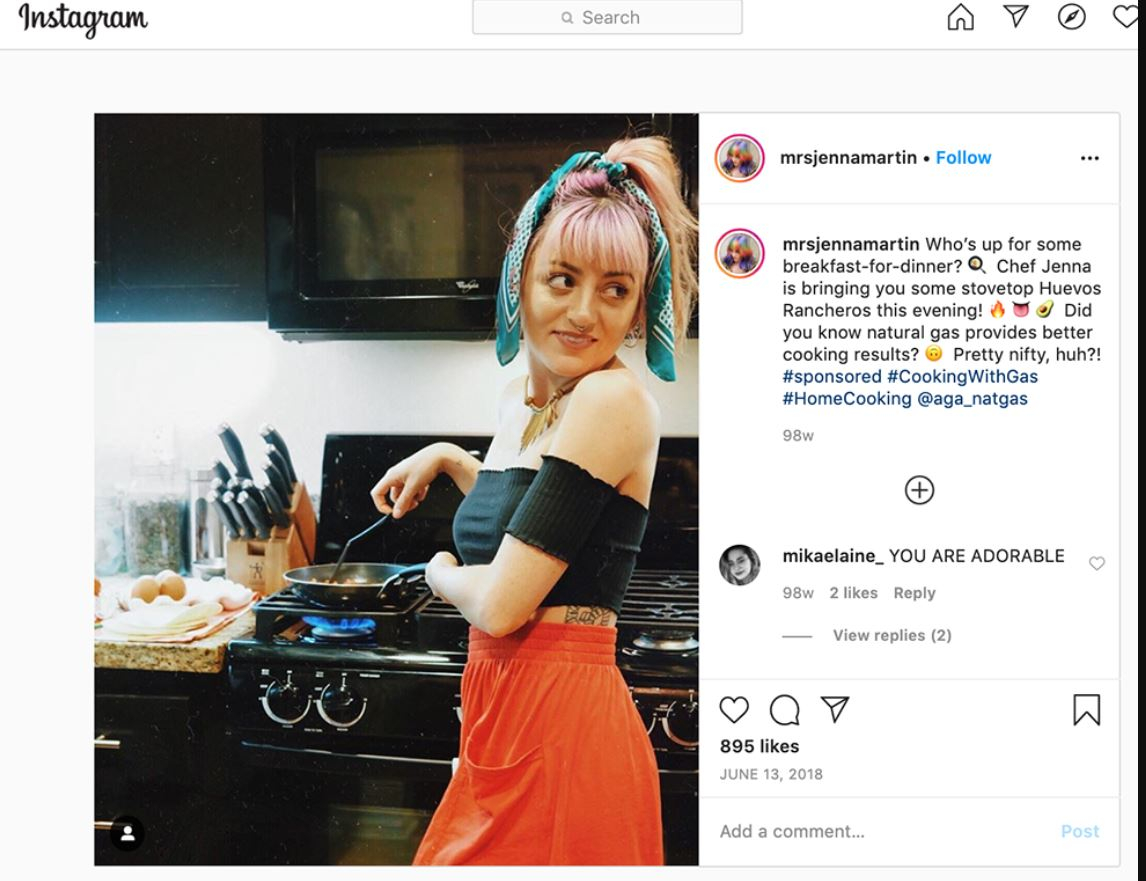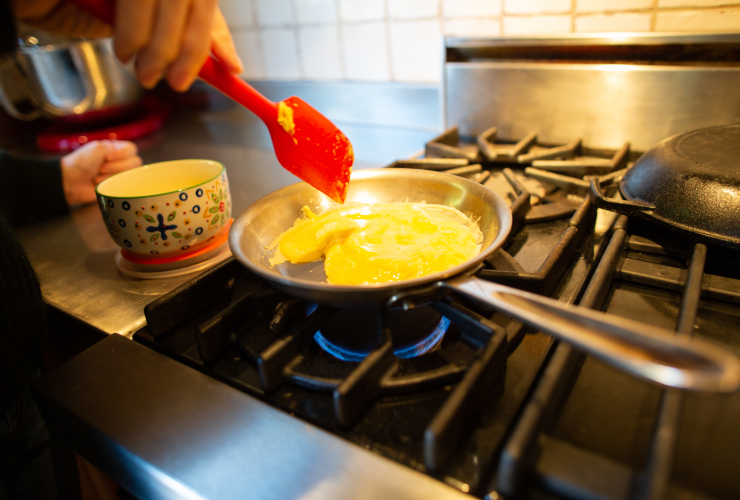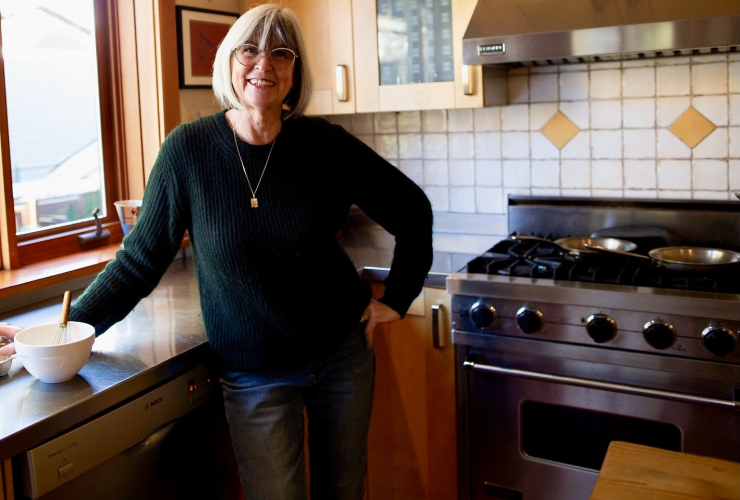Several thirtyish friends are in a booth at a warehouse district brewpub. One of them, recently converted to cooking with induction, asks the table what kind of stove they like to cook with.
Faizah jumps in. “Gas,” she says. “It gets really hot and you can control the temperature much better.”
There is agreement from one or two. Another friend says he has a flat-top electric that he likes. “Easy to clean.”
The hook is baited, but a train storms by stopping all conversation for a minute. When it settles down, the convert asks if anyone has tried induction.
“What’s induction?” asks Faizah.
An explanation ensues, somewhat muddled, but in translation boils down to this: instead of burning methane (a.k.a. natural gas) or making coils glow with electric current, induction uses electromagnetism to create heat. The cookware itself — its iron atoms excited by the magnetic field — becomes the heat source, rather than the stove element.
“And why is it better?” asks Faizah.
Because, I (Ryder) reply (yes, I am the proselytizing convert), it’s faster than gas, easier to clean than electric coil, and is climate-friendly; and chefs the world over are going nuts for it.
They’re surprised they haven’t heard of it before. But I’m not because I’ve been doing a little research.
From Bob Hope to Instagram: A little backstory
The old cliché “Now we’re cooking with gas!” didn’t arise spontaneously, or innocently. It was apparently coined in the 1930s by American Gas Association public relations executive Everard “Deke” Houlgate.
According to Houlgate’s son, in a canny bit of promotion, his father got the saying into one of Bob Hope’s radio scripts. From there, it succeeded beyond Houlgate’s wildest hopes. Jack Benny took it up on his TV show; a Daffy Duck cartoon even featured the plug. Synonymous with making fast progress, it became a permanent part of the American lexicon.
So that’s at least eight decades that the oil and gas industry has been pushing gas stoves with pop-culture memes. The tradition continues: thirtysomethings like my friends and I at the brewpub are now firmly in their marketing crosshairs.
As Rebecca Leder reported in Mother Jones, marketers at two heavyweight gas trade groups have been hiring Instagram influencers to push gas stoves and appliances and launched a “millennial-centric” campaign in 2020 called “Natural Gas Genius,” complete with the Daffy-approved hashtag #CookingWithGas.
One southern California Instagrammer posing with her frying pan and midriff tattoo wrote a post about making huevos rancheros, ending with the none-too-subtle sentences: “Did you know natural gas provides better cooking results? Pretty nifty, huh?”

According to a followup by Leder, the post was deleted after her story about oil and gas payments to influencers came out.
This is genius all right. Remember that oil and gas marketers were the ones who also had the foresight to seize on the term “natural gas” — which has been around since the 1800s — instead of the term for what comprises 95 per cent of it: methane gas.
Yep, natural gas is methane, and there’s a reason advertisers prefer the former term. A poll by the Yale Program on Climate Communications showed that most of us have neutral or positive associations with the phrase “natural gas.” But the name for what comprises it, well, not so much. Yale researchers found that two of the main associations people have with the word “methane” are cow farts and climate change.
Climate change is the right association to make because that invisible gas boiling your organic brown rice ramen or frying up a free-range chicken breast is — when it escapes into the atmosphere — actually 86 times more potent a global-warming gas than CO2.
So-called fugitive methane that escapes from our production and delivery systems is no joke. In British Columbia, the methane vented from instrument sheds in active gas wells alone amounts to 83,000 tonnes annually — equal to the output of 1.515 million cars on the road for a year.
The rise of induction — and the chefs who love it
Lucais Syme opened the first of what ultimately became the first of three Autostrada Osteria restaurants back in 2014. Then called Cinara, the three-storey heritage building on Vancouver’s Pender Street had hints of classical architecture, perfect for the kind of Italian casual dining that Syme and business partner Dustin Dockendorf wanted to bring to the city.
The corner unit had never been used as a restaurant, and they had to build out the kitchen from scratch. In itself, this wouldn’t have been a big deal, but there was no way to safely or cheaply vent the exhaust from a gas range.
“Gas exhaust has to go out,” says Syme. “You can't have what's called a recirculating hood-vent system.”
With a recirculating system, grease vapours are trapped in a charcoal filter, but the filter does nothing to capture the harmful emissions like nitrogen dioxide and formaldehyde that come from the flame below the pan.
Similar to what comes out of your car’s tailpipe, these fumes can't stay in the kitchen, and in Cinara’s case, they couldn’t be vented out of the building below the open windows of second-storey residents.
In this situation, Syme’s cheapest and safest option was induction. And so began his appreciation for cooking with electromagnetism.
Several other Vancouver chefs I spoke to — Angus An, Patrick Hennessy, Meeru Dhalwala — are also fans. Topping the list for most of them is that induction is fast. Faster than gas? Oh, yes. Boiling water on any stove is a waiting game, ever since the days of Bob Hope, gas ranges were lauded for their speed relative to electric burners. But there’s a new sheriff on the range: induction now kicks butt in this category. An electromagnetic range can boil a pot of water twice as fast as gas.
“This is one of the busiest restaurants in Canada by far, and we need the firepower in the induction to keep up with the business.” That’s John Horne, executive chef of Canoe in Toronto in a recent CBC interview.
Forgive Chef Horne for using “fire” to describe an electromagnetic process; in North America, our collective vocabulary is still catching up with induction. Europe, as usual, is way ahead of us.
“Already in Europe, all the best kitchens have built-in professional induction — like, everywhere,” says Patrick Hennessy, chef-owner of Michelin-starred restaurant Barbara in Vancouver. “They’re all getting rid of gas.”
What about responsiveness? Like many of us, my friend Faizah assumes that gas ranges are the best option out there for temperature control. Once again, induction shows up strong.
Consumer Reports writes that induction ranges “generally outperform” every other kind of range in their tests. “In fact,” writes their introduction to the subject, “every induction cooktop and induction range that has come through our range lab delivers fast cooktop heat and superb simmering.”
Hold the sweat, burns and asthma, please
For pets, kids, and those of us who might be sometimes a bit rushed and forgetful (we know who we are), induction means safety. You can put your hand on an active induction element and you won’t get burned. A cloth left on a live burner won’t combust, and a spatula won’t melt.
No flame equals very little lost heat, so for home chefs, cooking a big meal in a small kitchen in summer is far less of a sauna. Sixty per cent of the heat created by gas ranges ends up heating you and your kitchen, not the food; with an induction range, only 14 per cent of the heat is lost.
“Induction energy goes into cooking the food, not the environment,” says Angus An of Fat Mao and Maenam. “The kitchen is much more bearable. I enjoy it for that reason, and my cooks appreciate it for that reason as well.”
There’s another equally surprising safety aspect to choosing induction over gas. A meta-analysis of 41 past studies found that children in homes with gas stoves are 42 per cent more likely to develop asthma, a risk on par with living with a smoker. This is one reason why Deborah Curry, a Vancouver doctor and member of the Canadian Association of Physicians for the Environment (CAPE), has been campaigning to change the way we cook.
“Natural gas kitchen appliances emit nitrogen dioxide, which studies show can pollute indoor air and exacerbate asthma attacks in children,” she said in a CAPE press release. “Adding this to climate-change-induced wildfire smoke is a recipe for poor lung health.”
But wait!
OK, so you’re ready to believe that induction is — like electric heat pumps and electric vehicles — another “better for you, better for the planet” innovation. A feel-good appliance that actually works better than the alternatives that have been our only options for literally 100 years.
Faster than gas. No excess heat or indoor air pollution from burning methane. Safer for kids and pets and chefs than gas or electric.
“But wait!” I (Ryder) can hear my friend say. “Does it taste as good?”
Unless you have a wood firepit in your kitchen, the answer is yes: the taste will be exactly the same. If you think the flame of a gas range imparts a special flavour to your food, food science says otherwise. When proteins encounter high heat, they caramelize in what’s called the Maillard reaction. Any source of high temperature will induce this tasty phenomenon, whatever source you’re using.
“A ha, but I’ve heard you have to buy all new cookware if you want to use induction.”
Nope. The pan just has to have a flat bottom and be magnetic. So if you’re using cast iron or stainless steel, you’re good to go. Clad cookware typically works. Pure ceramic, aluminum and copper won’t work, nor will glass.
Most of us swap out our stoves only when we’re forced to. If you’re not at that point in your appliance relationship, you can take a middling step: a quality two-burner portable induction range that sits on your countertop can supplement your current setup — boiling water, handling stir fry, doing everything two burners can do — can be had for under $200.
Ryder Bergerud is a software developer based on the West Coast, with an interest in climate solutions. He has an MsC in computer science from Georgia Institute of Technology and has worked in areas ranging from AI-assisted comedy writing to e-commerce.
Author of the 2020 book Heart of the Coast, Tyee Bridge's features on environmental and progressive issues have received four National Magazine Awards and seven Western Magazine Awards. He is an editor and story producer for the Hakai Institute.
It's another thing smart
It's another thing smart consumers can do for the planet..........we have an induction range and love it.........have put one into our daughter and our son's home, after reading the contribution gas ranges make to childhood asthma.
How much longer are we going to swallow the lies of the Fossil fools and their planet destroying industries???? There are alternatives rising everywhere.....let's transition wherever we can.
You can also easily do
You can also easily do without an electric kettle and microwave, too. Induction is even a bit of an outdoor cooking star with a cast iron griddle.







Comments